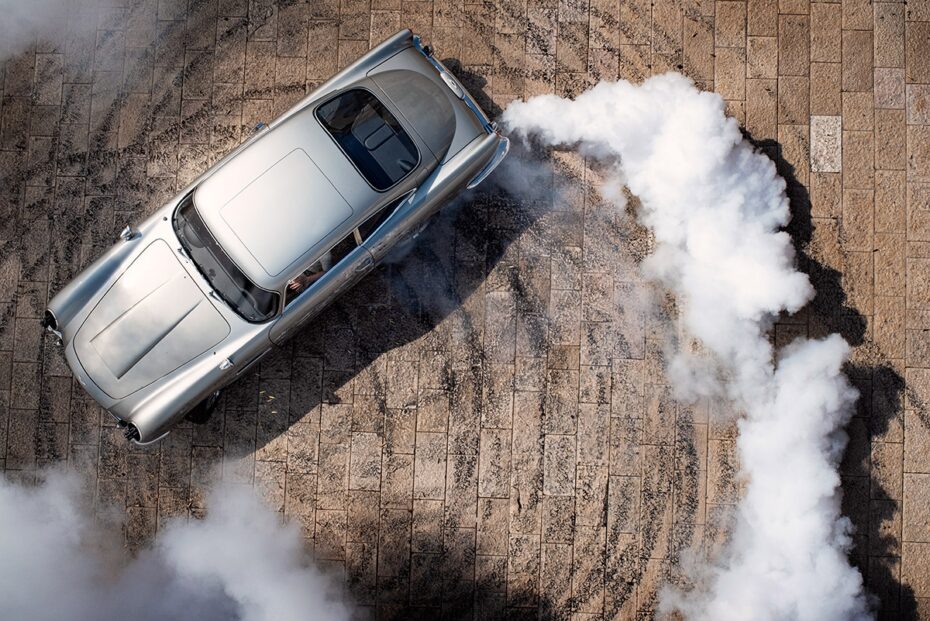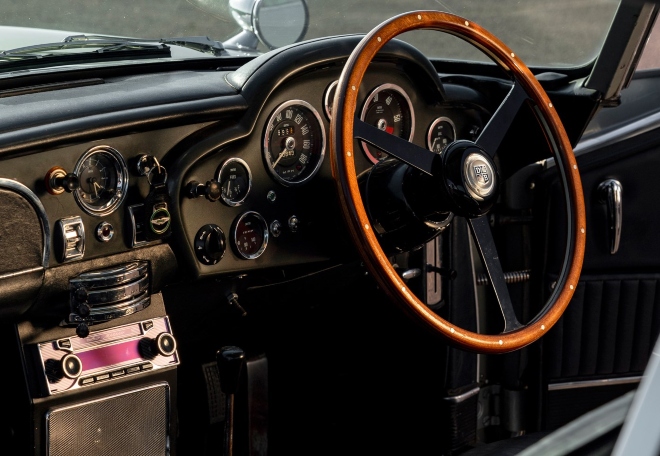Call it what you will: an effective marketing model or consumer-centric branding; cars are defined by the people who drive them. It may be a bit of a chicken-and-egg conundrum figuring out which came first, the discursive image of the ideal car owner or the loyal car lovers themselves. Regardless, the relationship between cars and the people who love, own or hope to own them is an intimate one – a relationship built around the sheer euphoric act of driving.

Video: Aston Martin.
One need look no further for proof than history’s most famous car – James Bond’s Aston Martin DB5. The DB5 has captured the hearts of many a car lover since its debut in 1963, not least because its Agent 007 who’s behind the wheel, but also because of what it means to drive it. Between chasing down villains along winding cobbled streets and silently speeding off from one city to the next in the dead of night as international spies do – the movies only show off what the car was built to do: work like a beast.
 Daniel Craig’s Bond manoeuvres an aggressive turn in the DB5 in No Time to Die, 2021. Photo: Danjaq LLC, Universal, MGM.
Daniel Craig’s Bond manoeuvres an aggressive turn in the DB5 in No Time to Die, 2021. Photo: Danjaq LLC, Universal, MGM.
One of the fastest cars in the world at the time, the DB5 featured a 4.0 litre naturally-aspirated straight-six producing 282bhp and 380Nm, all that power sent through a five-speed manual gearbox to the rear wheels. Cornering in the DB5 lies just a step shy of being hardcore, though the heavier the steering is on such cars, the less input is needed mid-turn. The engine however more than makes up for it with its smooth, graceful ride at enormous velocities, living up to the DB5’s status as a grand tourer. Even modern GTs with their sophisticated suspension geometry and adaptive damping would struggle to match this senior in ride softness.
 Sean Connery’s Bond cruising along the countryside in the DB5 in Thunderball, 1965. Photo: United Artists, Danjaq LLC.
Sean Connery’s Bond cruising along the countryside in the DB5 in Thunderball, 1965. Photo: United Artists, Danjaq LLC.
At the car’s helm is a more than well-tuned cushy leather seat which sets the driver up for extra visibility, along with a generously-sized tactile wooden steering wheel paired with a comfortingly delicate gear knob, fitted for your driving pleasure. The pedals have also been known to be so skinny that the driver would feel clumsy in everyday sneakers, almost as if demanding you to suit up in a pair of well-shined oxfords. The wind noise over the front wings due to the lack of soundproofing is almost welcome, a reminder to the driver that they are already shifting into serious speed.
 Inside a preserved 1960s DB5. Photo: Car, UK.
Inside a preserved 1960s DB5. Photo: Car, UK.
 The dainty gear knob of the original DB5. Photo: Car, UK.
The dainty gear knob of the original DB5. Photo: Car, UK.
The DB5 was discontinued in 1965 but received a special limited re-production of 25 units in 2020 to match the release of the last Daniel Craig Bond film, No Time to Die – a testament not just to its enshrined place in motoring history as the Agent 007 car, but also to the love of cars that were meant to be learnt, almost struggled with and finally, masterfully driven. The 2020 DB5 goes for a hefty price of 3.6 million USD. With such an iconic name as the DB5 at the centre of luxury motoring, could one bear a switch to self-driving cars? Without James Bond skilfully in the driver’s seat, the iconic DB5 seems to lose a huge chunk of what makes it so beloved.
 The Aston Martin DB5 Goldfinger continuation, 2020. Photo: Aston Martin
The Aston Martin DB5 Goldfinger continuation, 2020. Photo: Aston Martin